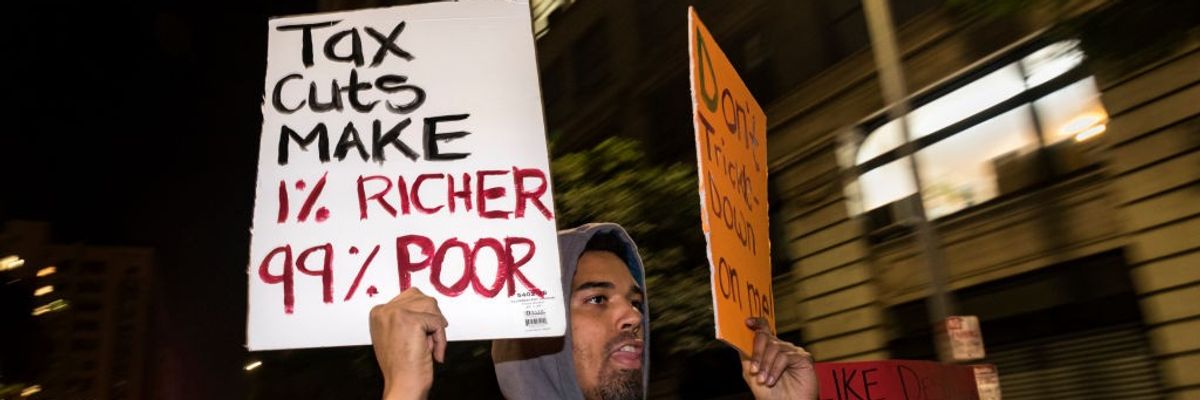In early 2018, I remember sitting at my kitchen table, trying to make sense of how the 2017 Trump tax law was supposed to help families like mine.
I’d read headlines promising “middle class tax relief.” But when tax season rolled around, there was little relief to be found—especially for me, a Black woman navigating caretaking for elderly parents and a demanding career. My refund was smaller, my deductions had vanished, and the math simply didn’t add up.
It was clear then, as it is now: the Trump tax cuts weren’t designed with people like me in mind.
Let’s be clear: The 2017 Trump tax cuts failed Black women—and millions of others—the first time around. They widened inequality, rewarded the wealthy, and ignored the economic realities of everyday families.
Now as more GOP tax cuts for the rich move through Congress, history is poised to repeat itself. The bill would disproportionately benefit the well-off—and harm the financial well-being of millions of working Americans, including Black women like me.
Instead, lawmakers should embrace the “Black Women Best” framework and take a different path. Coined by Janelle Jones, the principle is that when Black women are thriving, then the economy is truly working for everyone.
For example, when the 2017 tax cuts were passed, most of the benefits went to wealthy, white households. Had lawmakers considered the financial realities of Black women, who are typically underpaid, they could have made a package better designed for all those who need the most help—not just Black women, but everyone struggling to make ends meet.
Refundable tax credits like the Child Tax Credit (CTC) are one of the most direct ways the government supports working families. When structured fairly, they give families a much-needed financial boost.
The 2017 tax law increased the CTC from $1,000 to $2,000 per child. But many families receive far less because it restricted the refundable part of the credit for those with modest earnings. That left out many of the lowest-income families—including 45% of Black children (double the share of their white peers)—whose parents didn’t earn enough to qualify.
In 2021, President Joe Biden signed the American Rescue Plan Act, which temporarily restructured the CTC to make it larger and fully refundable. For the first time, all the families at the bottom received the full credit. The results were stunning: Child poverty hit record lows.
But that progress was short-lived. The expanded credit has not been renewed, and child poverty shot right back up.
This time around, the House temporarily boosted the CTC to $2,500. But limits on the refundable portion would be continued, meaning 17 million of the lowest-income children in America will still be left out.
Using the “Black Women Best” framework would make those expanded benefits permanent—not just because it’s the right thing to do for Black families, but because it lifts up the entire economy.
But instead, in this way and others, the bill favors the already wealthy.
Another significant example is the bill’s deduction for income people receive from “pass-through” businesses. Rather than pay a corporate income tax, these business owners pay taxes on their profits through their personal taxes. The 2017 tax law created a 20% deduction for this kind of income—and now lawmakers want to permanently increase it to 23%.
Increasing this deduction means Congress is giving handouts to those already holding the keys to wealth. A Treasury report showed a jarring 90% of the people who received this benefit were white. Only 5% of the benefits went to Hispanic taxpayers—and just 2% to Black taxpayers.
Let’s be clear: The 2017 Trump tax cuts failed Black women—and millions of others—the first time around. They widened inequality, rewarded the wealthy, and ignored the economic realities of everyday families. Repeating those mistakes in 2025 would be more than negligent—it would be a deliberate choice to uphold a broken system.
But there’s another way. When Black women thrive, everyone wins. It’s time for our tax code to reflect that truth.



